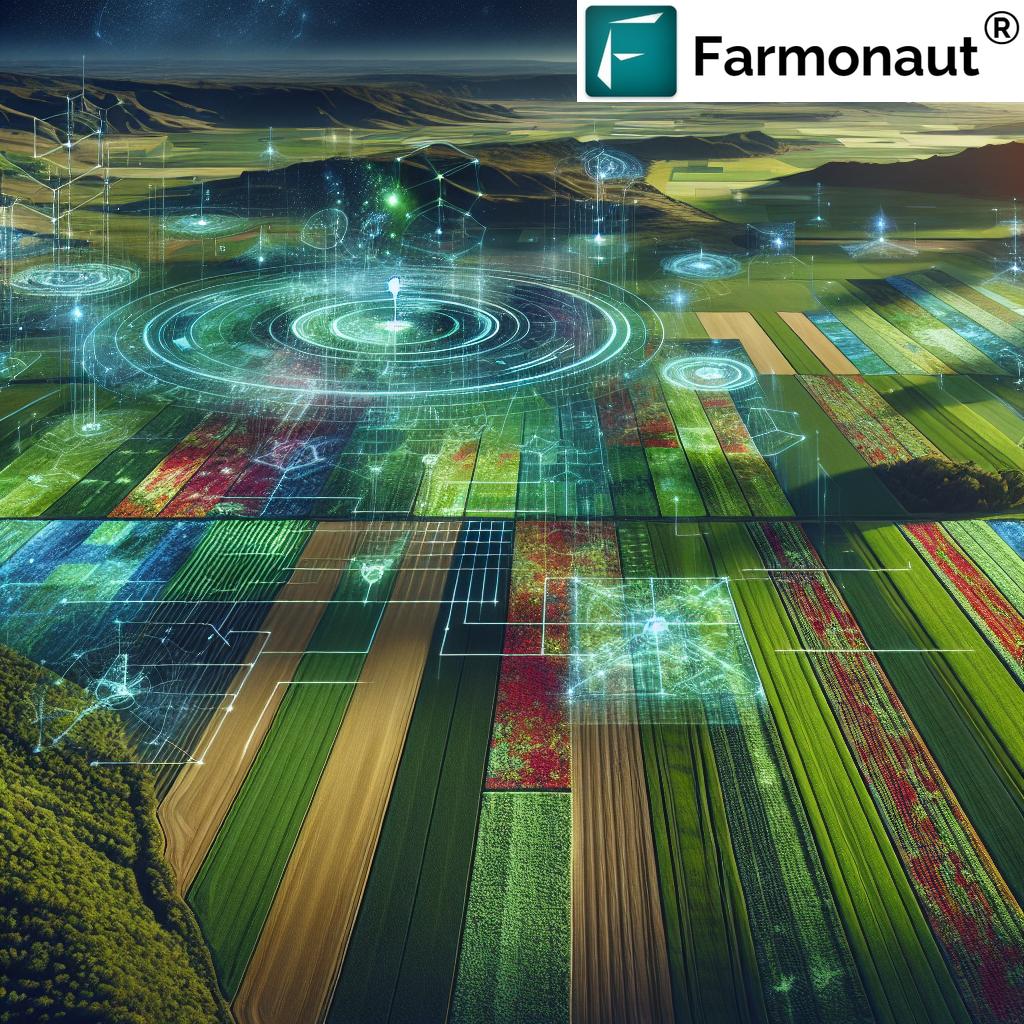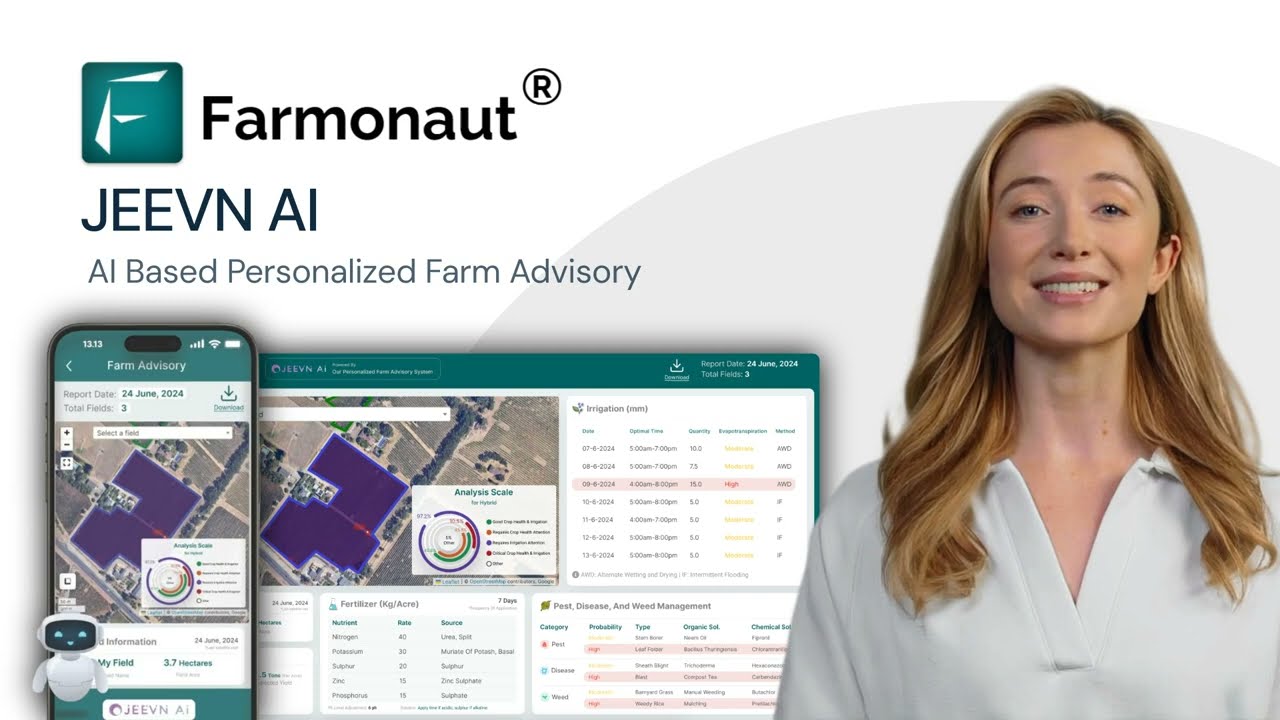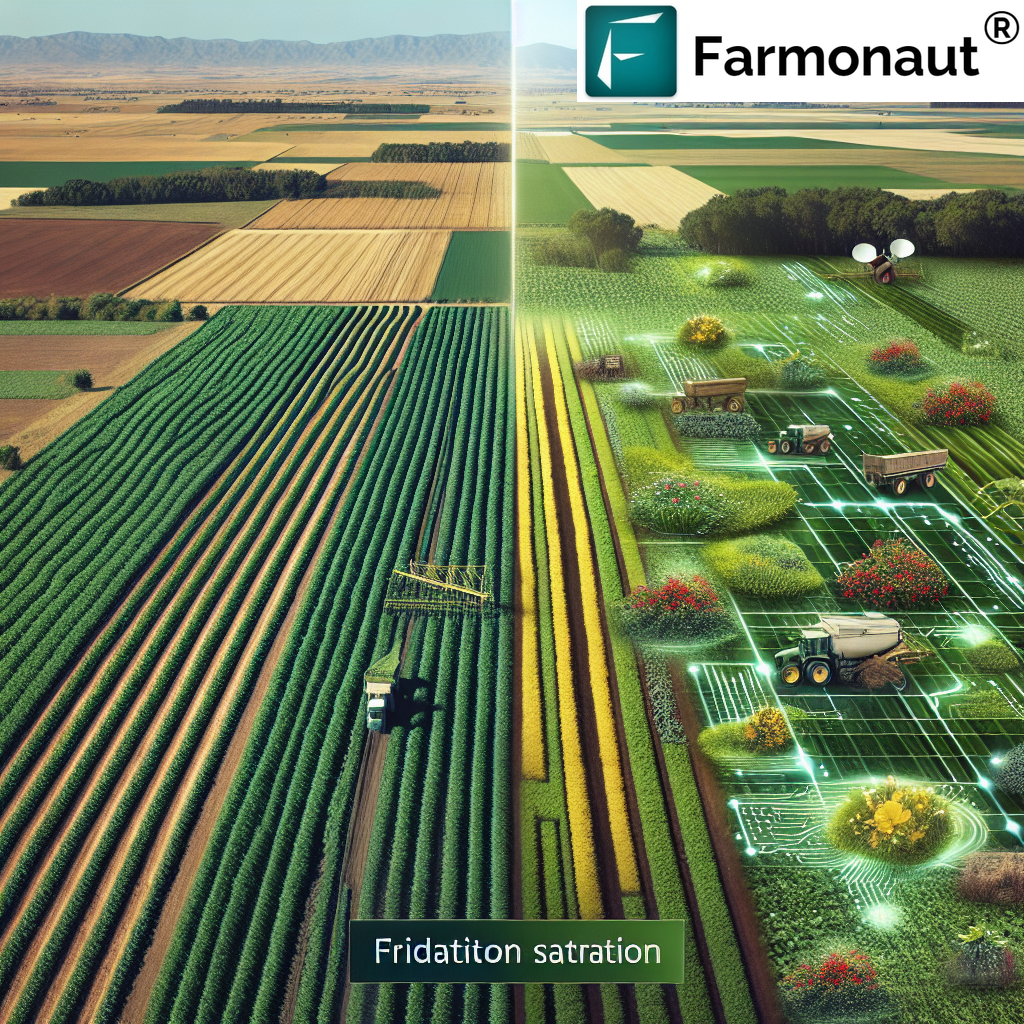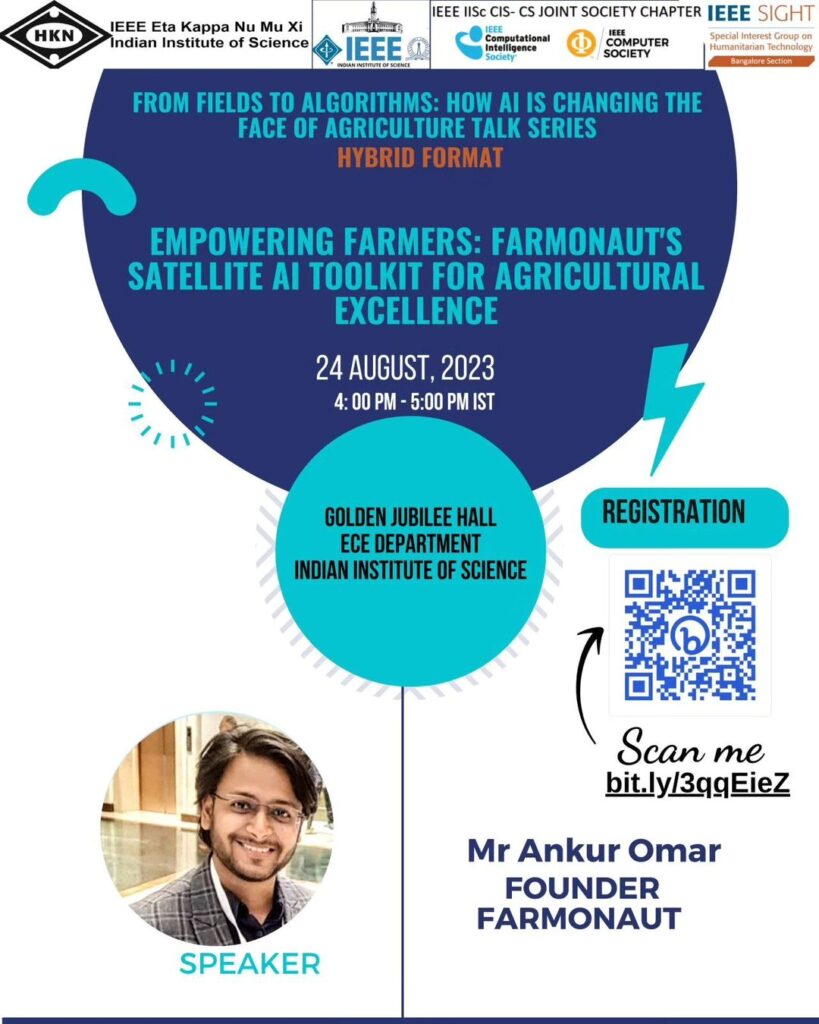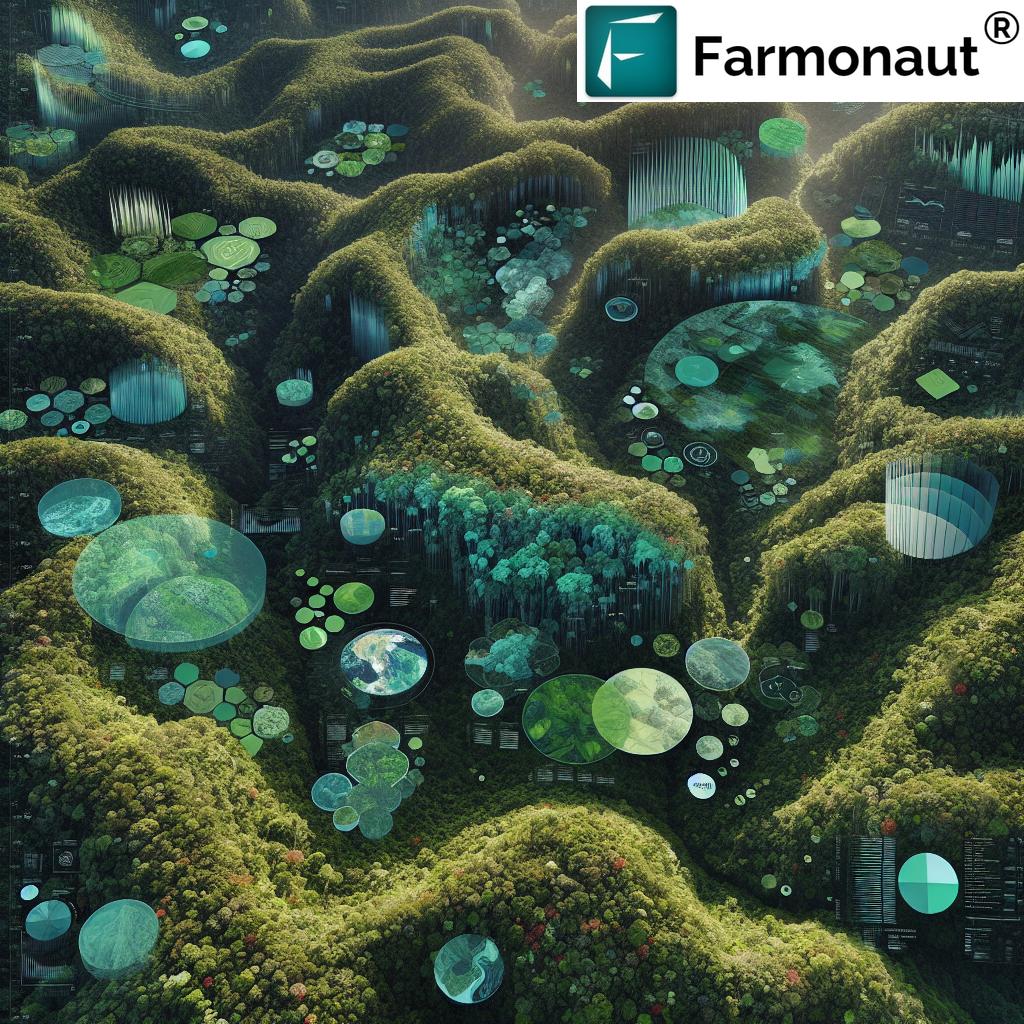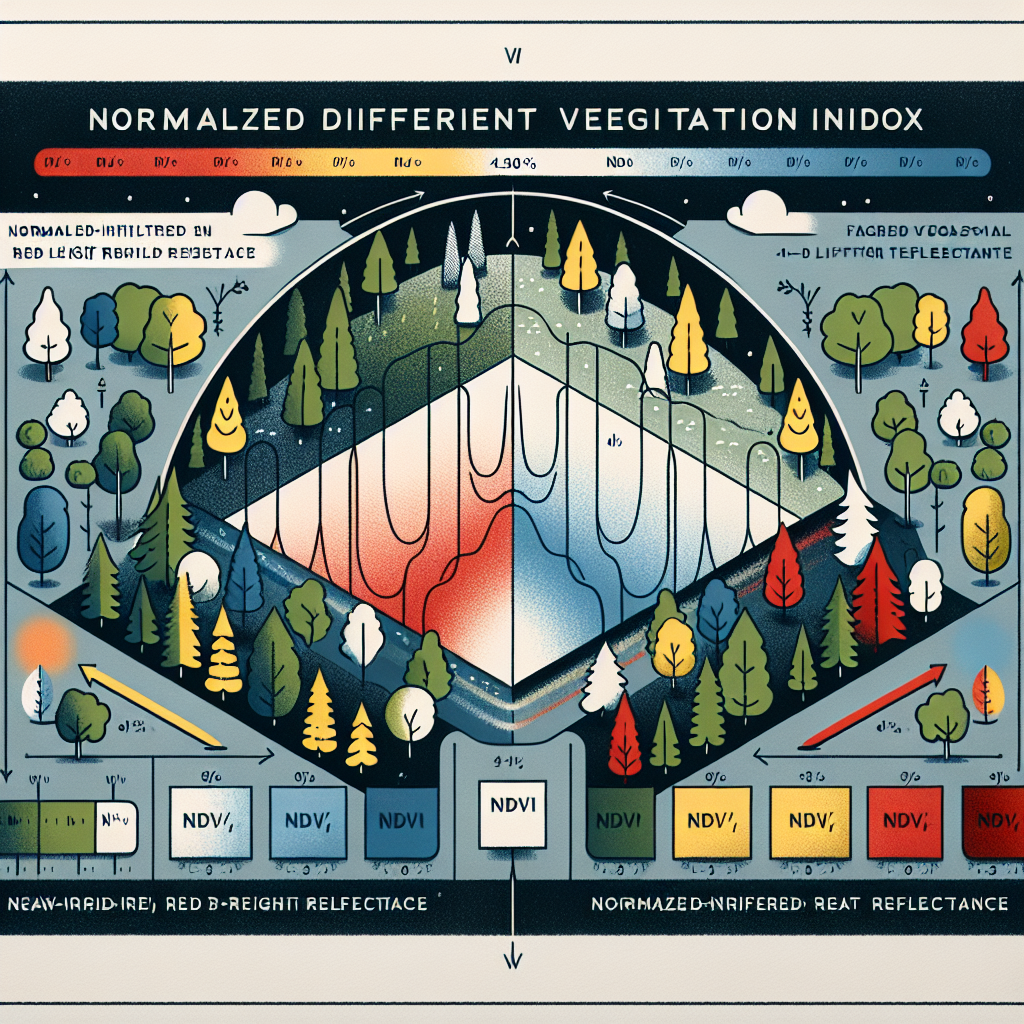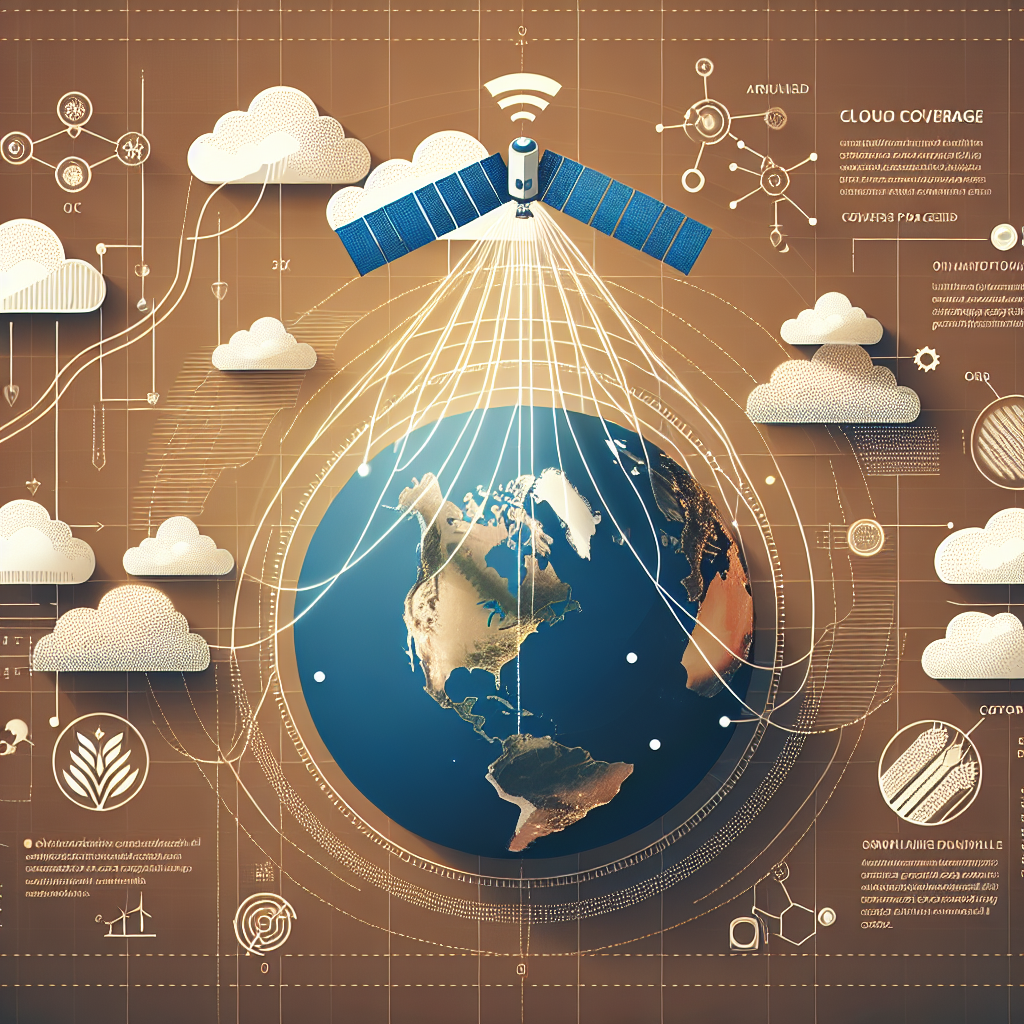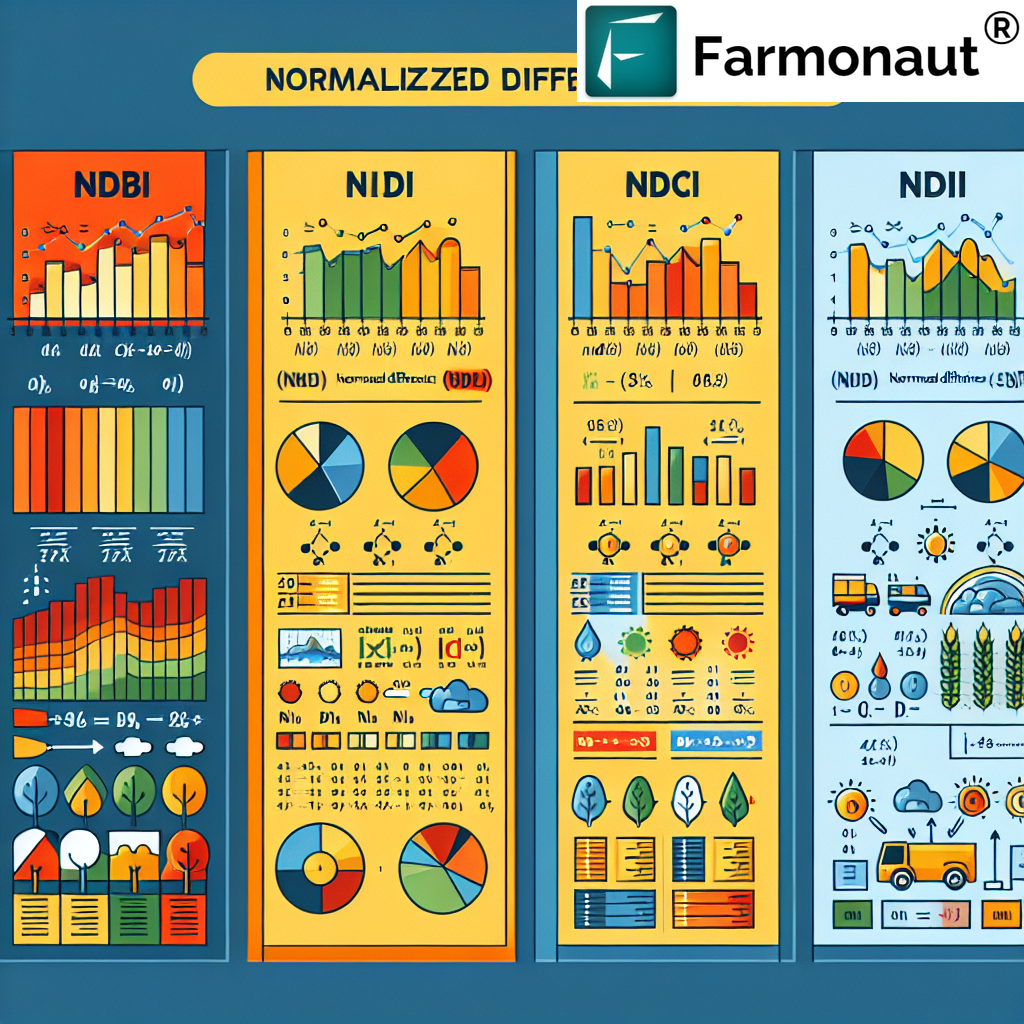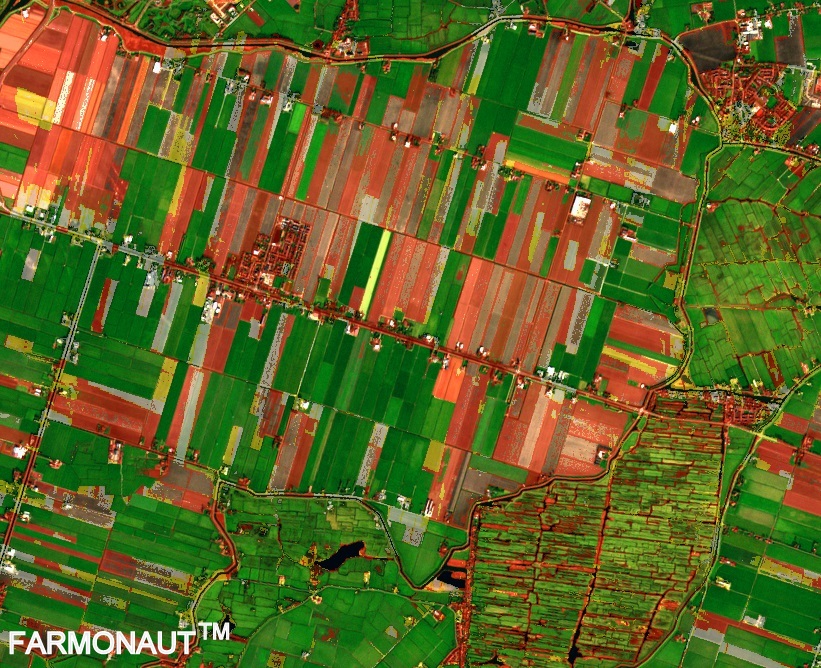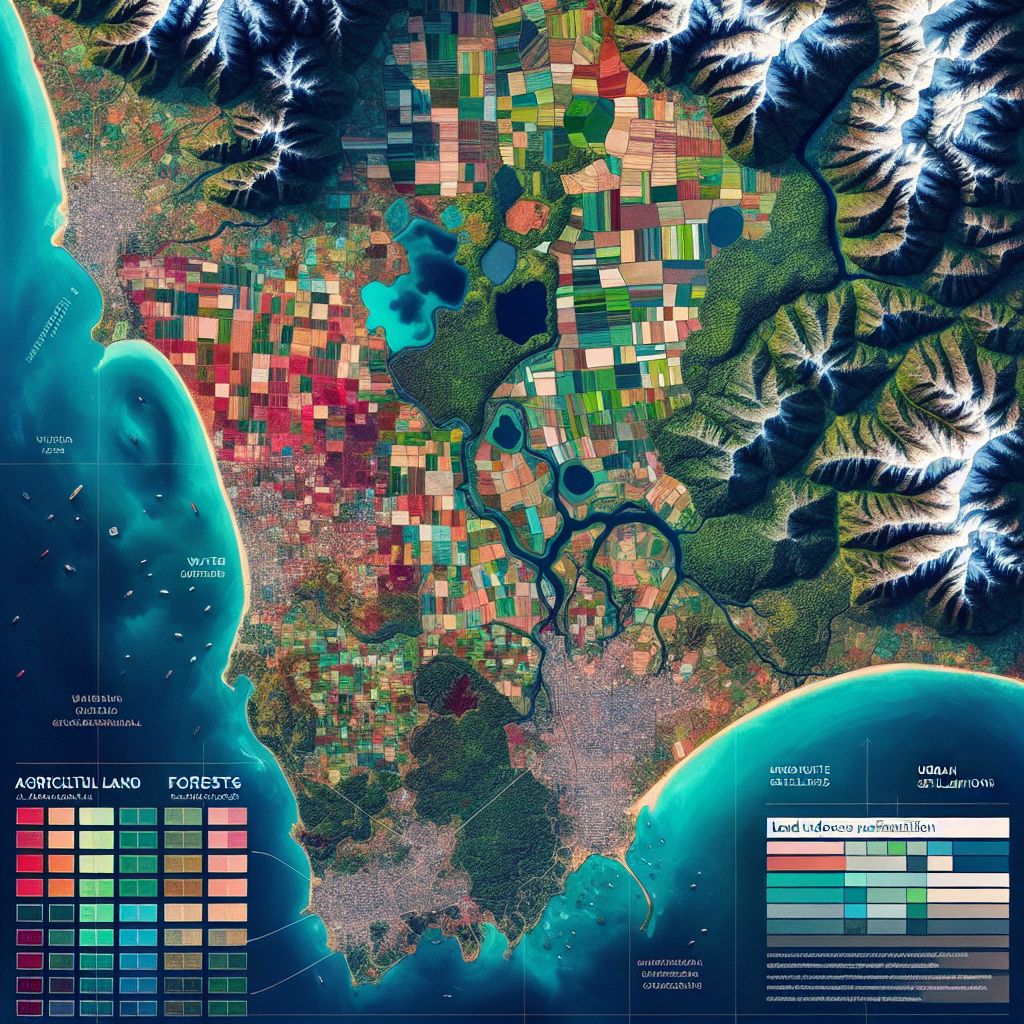ERP Aerospace Industry: 7 Key Techs in Agriculture
“Over 7 advanced aerospace technologies are now integrated into precision agriculture for enhanced crop monitoring and management.”
Table of Contents
- Introduction: Aerospace Technology in Agriculture
- Aerospace’s Digital Revolution in Agriculture & Forestry
- The 7 Key Aerospace Technologies Transforming Agriculture
- Aerospace Technology Impact: Comparative Matrix
- Precision Farming Solutions by Farmonaut
- Sustainable Agricultural Practices & Forest Monitoring
- Ongoing Challenges & Future Directions
- Frequently Asked Questions
- Explore Farmonaut Solutions
Introduction: Aerospace Technology in Agriculture
The aerospace industry stands at the intersection of cutting-edge innovation and practical application, driving significant advances in agriculture, forestry, and farming. With the design, development, and deployment of aircraft, spacecraft, and advanced systems, aerospace technologies empower us to enact smarter, more sustainable agricultural practices.
Today, aerospace technologies in agriculture include unmanned aerial vehicles (UAVs)—better known as drones—satellite imagery for precise crop monitoring, remote sensing instruments, and AI-driven analytics. These tools help optimize crop management, elevate yield, enhance resource efficiency, and strengthen the global supply chain for food production.
In this comprehensive guide, we break down the seven most impactful aerospace technologies revolutionizing precision farming solutions today, explore how these innovations lift our ability to monitor and manage crops and forests, and show how companies like Farmonaut are spearheading the integration of aerospace, AI, and data-driven insights for a more sustainable farming future.
Aerospace’s Digital Revolution in Agriculture & Forestry
The integration of aerospace and satellite-based tools into agriculture and forestry marks a transformative leap from intuition-based farming to data-centric, intelligent management. Drones for crop monitoring, satellite imagery for agriculture, and remote sensing in farming now facilitate:
- Field-level precision in irrigation and fertilization
- Early detection of pest infestations and crop health issues
- Real-time assessment of soil moisture, nutrient deficiencies, and environmental conditions
- Comprehensive forest monitoring and conservation over massive terrains
- Rapid response to climate change impact on agriculture and disasters like wildfires
Key breakthroughs in aerospace technology in agriculture empower both large agro-enterprises and individual farmers, directly boosting productivity, sustainability, and resilience in the face of global challenges.
“Satellite imagery covers more than 80% of global farmland, enabling large-scale agricultural analysis and forecasting.”
The 7 Key Aerospace Technologies Transforming Agriculture
Let’s delve into the seven aerospace technology pillars driving next-generation precision farming solutions, resource management, and environmental sustainability:
-
Unmanned Aerial Vehicles (UAVs) & Drones
- Rapid, affordable aerial surveys for field monitoring
- High-resolution imagery captures crop health, soil conditions, pest infestations
- Targeted interventions for irrigation, fertilization, pest control, and input applications
Drones for crop monitoring are redefining how farmers assess productivity, minimize waste, and react quickly to threats. Their role in precision agriculture is critical, offering live data and the ability to deploy treatments exactly where needed.
-
Satellite Imagery for Agriculture & Forestry
- Extensive coverage capabilities of fields, forest tracts, and entire regions
- Enables remote sensing for moisture levels, disease signs, nutrient deficiencies
- Drives forecasting models for yields and climate risk assessment
Satellite imagery for agriculture allows for timely interventions, early detection of stress, and more efficient resource allocation.
-
Remote Sensing in Farming & Forest Monitoring
- Harnesses multispectral and hyperspectral sensors for detailed crop analysis
- Unlocks advanced pest control and disease detection across vast landscapes
- Enables sustainable management of forests with regular assessment and conservation planning
-
AI-Driven Analytics & Decision Support Systems
- Transform raw data (satellite/UAV) into actionable insights for farmers
- Predict yields, water requirements, pest outbreaks, and resource optimization strategies
- Automate aspects of crop and soil management
-
Internet of Things (IoT) & Smart Sensor Networks
- Deploys sensors for real-time monitoring of climate, soil moisture, fertilization levels, irrigation efficiency
- Links machinery with satellites and drones for holistic farm management
- Improves traceability and transparency throughout the agricultural supply chain
-
UAV Sprayers & Aerial Application Technology
- Apply fertilizers, pesticides, and micronutrients with precision
- Reduce input waste and minimize environmental impact
- Lower labor and time required for traditional farming interventions
-
Blockchain and Traceability Solutions
- Secure, transparent documentation of farm-to-fork supply chains
- Combats fraud, increases consumer trust, and supports compliance in agriculture and forestry
- Creates strong links between field activities and end consumers
Aerospace Technology Impact: Comparative Matrix
To illustrate the transformative impact of aerospace innovations, here’s a comparative feature-impact matrix measuring adoption, benefits, and leading sample applications in modern agriculture and forestry.
| Technology Name | Core Function in Agriculture | Estimated Adoption Level (% of large farms) |
Key Benefits (Yield, Cost, Sustainability) |
Sample Application |
|---|---|---|---|---|
| Drones/UAVs | Aerial crop & field monitoring, high-res imagery collection | 65% | Yield +12-20%, Cost −10-18%, Strong sustainability via reduced input waste | Crop scouting, targeted spraying, soil NDVI mapping |
| Satellite Imagery | Large-scale, regular remote sensing & monitoring | 80% | Yield +15%, Cost −9%, Major sustainability gains | Early disease/stress detection, water management |
| Remote Sensing | Soil, crop, moisture, environment, and forest monitoring | 60% | Yield +13%, Cost −12%, Prevents land/forest degradation | Pest detection, forest change mapping |
| GIS Mapping | Geographical analysis & decision support | 55% | Yield +8%, Cost −7%, Improved land use allocation | Field zoning, site-specific management |
| AI-Enabled Analytics | Predictive insights, trend analysis, decision support | 48% | Yield +16%, Cost −15%, Sustainable input distribution | Yield forecasting, fertilizer scheduling |
| UAV Sprayers | Precision aerial application of chemicals/fertilizers | 33% | Yield +6%, Cost −20%, Reduced run-off/chemicals | Targeted spraying, disease hotspots |
| Hyperspectral Imaging | In-depth analysis of crop/plant health, soil | 12% | Yield +11%, Cost −8%, Deep diagnostics for early action | Nutrient/micronutrient deficit detection |
Precision Farming Solutions by Farmonaut
At Farmonaut, we specialize in making satellite-powered, AI-driven agricultural management accessible to farms of all sizes. Our approach puts the world’s most powerful aerospace technologies directly in the hands of farmers, agribusinesses, and institutions, breaking down the barriers to truly efficient, data-driven agriculture. Here’s what sets our solutions apart:
- Satellite-Based Crop Health Monitoring: We deliver real-time crop health monitoring using advanced satellite imagery. By analyzing NDVI (Normalized Difference Vegetation Index), soil moisture levels, and multiple other band-derived insights, our system provides clear, actionable guidance on irrigation, fertilization, and pest control. Learn more about our large-scale farm management tools.
- AI-Based Personalized Advisory: Our JEEVN AI Advisory System analyzes satellite and field data and delivers custom suggestions—including timely interventions for disease or nutrient deficiency—through an easy-to-use mobile and web app interface.
- Blockchain-Based Traceability: Transparency in the supply chain is vital for today’s agriculture and food industry. We offer product traceability tools that leverage blockchain, ensuring secure tracking from field to fork—combatting fraud and strengthening consumer trust.
- Fleet & Resource Management: Enterprises can manage fleets and farm machinery using our platform, optimizing logistics, reducing operational waste, and improving resource utilization.
- Environmental Monitoring & Carbon Footprinting: Sustainability is at the heart of what we do. Our carbon footprinting solutions help measure, report, and reduce your environmental impact in real time—enabling farms to meet global sustainability standards and regulatory requirements.
- Integration & API Access: For advanced users and agritech developers, our open API and complete developer documentation allow seamless integration with existing farm management systems, research projects, and bespoke software.
- Access for All: By delivering these services via Android, iOS, and web apps, we ensure global and local accessibility. Try our easy onramp with:
Sustainable Agricultural Practices & Forest Monitoring
Modern agriculture faces ever-growing pressures: resource scarcity, environmental degradation, and the accelerating impacts of climate change on crops and natural ecosystems. Aerospace innovations provide critical solutions to these challenges:
Forest Monitoring and Conservation with Aerospace Technology
- Satellite imagery and aerial surveys enable the accurate mapping of forest cover, overall biodiversity, and deforestation rates.
- Forestry professionals can use remote assessment to develop conservation strategies, respond to illegal activity, and monitor the impact of climate change.
- Aerial firefighting—with specially-equipped aircraft—saves both forest resources and communities by fighting wildfires before they escalate.
Sustainable Agricultural Practices with Precision Technology
- Precision farming technologies facilitate efficient use of water, fertilizers, and pesticides, minimizing waste and environmental pollution.
- Data-driven assessments—using IoT sensors, remote sensing, and satellite imagery—empower farms to achieve more with less, supporting sustainable land stewardship.
- Blockchain-based traceability ensures that supply chains remain responsible, ethical, and transparent.
Find out how our Crop, Plantation, and Forest Advisory solutions empower sustainable agriculture and large-scale land management.
Ongoing Challenges & Future Directions for Aerospace in Agriculture
While aerospace technology in agriculture continues to advance at breathtaking speed, there remain critical challenges:
- Cost & Accessibility: Many advanced technologies can be cost-prohibitive for smallholder farmers. Bridging this gap is essential for truly democratized precision farming.
- Technical Skills: Operating, maintaining, and interpreting data from new sensors and UAVs requires upskilling across the industry.
- Data Privacy & Cybersecurity: With greater digitalization comes a growing need for robust data protection standards and systems.
- Scalability: Not all advanced tools are yet optimized for the diverse field, crop, and forest scenarios encountered worldwide.
The future of aerospace-enabled agriculture is bright:
- AI and machine learning will enable even more accurate forecasting and resource allocation, increasing yields and further reducing wastage.
- Autonomous UAVs and robotic machinery may take over several repetitive or hazardous farming tasks.
- Enhanced integration between IoT, AI, and blockchain technologies will yield unparalleled insights and transparency throughout the agricultural sector.
- Proactive responses to the climate change impact on agriculture will become increasingly vital for food security and environmental protection.
If you want to learn how Farmonaut’s platform is making these advanced solutions—such as satellite-based verification for crop loans and insurance—accessible to farmers and lenders, explore our Crop Loan and Insurance solutions.
Frequently Asked Questions (FAQ)
Q1. What is aerospace technology in agriculture?
Aerospace technology in agriculture refers to the use of advanced systems such as drones, satellites, AI, and remote sensing to monitor, analyze, and manage farms, crops, and forests efficiently and sustainably.
Q2. How does remote sensing in farming work?
Remote sensing in farming uses UAVs, satellites, and sensors to collect multispectral images, soil data, and climate metrics. These insights detect diseases, stress, moisture variations, and nutrient needs for targeted intervention.
Q3. What is satellite imagery for agriculture used for?
Satellite imagery for agriculture is employed in monitoring crop health, predicting yields, mapping soil moisture, and enabling rapid large-scale analysis for climate resilience and sustainability.
Q4. What are the main benefits of drones in agriculture?
- Quick detection of crop health issues, pests, and diseases
- Efficient field mapping and zoning
- Reduced resource wastage and improved input targeting
- Lower labor and time costs for surveillance and interventions
Q5. How can small- and medium-scale farmers access these advanced technologies?
Platforms like Farmonaut make precision agriculture tools, including satellite monitoring and AI forecasts, accessible via affordable subscriptions and user-friendly mobile/web apps.
Explore Farmonaut Solutions
At Farmonaut, we believe that advanced aerospace, AI, and blockchain technologies should be accessible and affordable for every farmer, agribusiness, and government institution worldwide. Experience firsthand how we optimize crops, forestry, and sustainability in the modern agricultural landscape!
- Large-Scale Farm Management
- Carbon Footprinting for Sustainable Agriculture
- Blockchain-Powered Product Traceability
- Farmonaut API Access and Developer Docs
- Android App & iOS App
Ready to get started? Choose a Farmonaut subscription that fits your needs:
Conclusion
Aerospace technologies are rewriting the rules of agriculture, forestry, and farming through precision, data, and sustainability. The integration of drones, satellite imagery, AI, IoT, and blockchain paves the way for increased yields, improved resource management, and a stronger response to the impact of climate change. Companies like Farmonaut are propelling this revolution, ensuring that the future of farming is efficient, transparent, and sustainable for generations to come.


